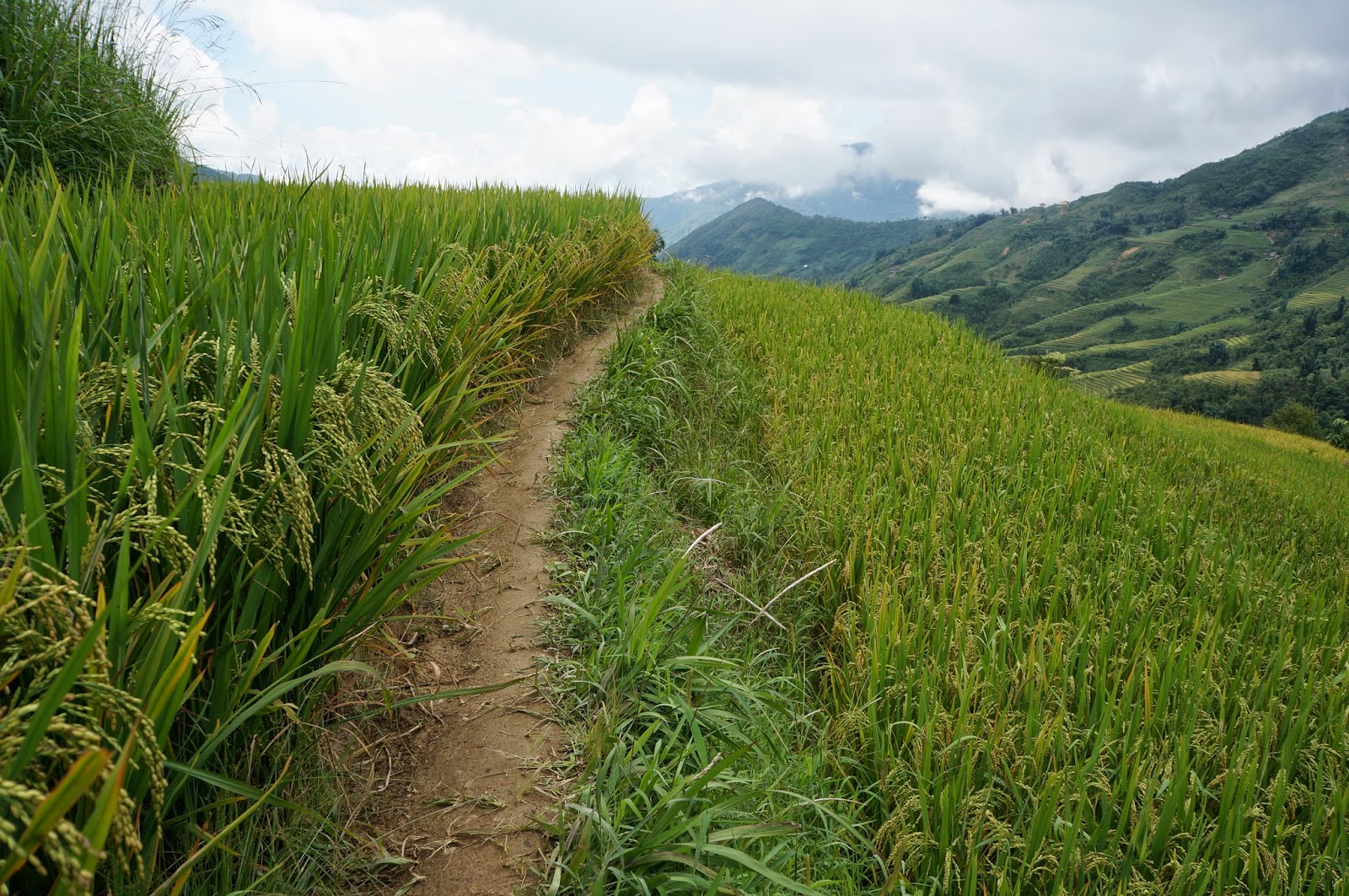We arrive at Lao Cai just after seven in the morning. The overnight train from Hanoi was comfortable enough but we're happy to vacate our tiny berth and stretch our legs. Located in the far northern reaches of Vietnam, (just three kilometers from the Chinese border), Lao Cai serves as the launching pad for Sapa, a quaint little town nestled high in the Hoang Lien Son mountain range--otherwise known as "The Tonkinese Alps".
Celebrated for it's hill tribes and rice terraces, Sapa's pastoral beauty is unrivaled anywhere else in Vietnam, making it one of the most touristic destinations in the north. Layered rice paddies fashion staircases that carve green into the grey and black speckled karst cliffs. Slivers of jagged rock peak through blankets of grey tumbling mist. Women trudge along dirt paths that snake high into the mountain terraces, their woven baskets fastened tightly to their shoulders--brimming with the day's harvest. In the fields and in the hills, water buffalo dredge the earth in neat lines while others flounder in the mud bottoms of empty paddies. Villagers reap green ribbons from the soil, bundling their yields as they hunch along the patchworked earth. Over a tarp-lined basin, the bundles are thundered against the basin's wooden frame until the final grain of rice discharges. From dawn until dusk, there is drumming in the hills.
From Lao Cai, we are swiftly transported towards Ta Phin Village where our hosts, Dat, and his wife, Li, are waiting to receive us. A brief but very scenic motorcycle ride drops us at the doorstep of their lovely home. For the next three days, Dat will guide us as we trek through the rugged backcountry terrain.
Trek #1
It rains periodically throughout the afternoon, and although we're lucky to avoid the heavy squalls, most of the valley is encased in fog by the time we reach the higher altitudes. A renaissance man by all means, Dat is an expert guide as well as a trained chef, self-taught woodworker, carpenter, farmer, and painter. As he leads us along the muddy paths, he teaches us about the farming methodologies of the mountain tribes while also pointing out all of the different crops--everything from hemp, (which is harvested for making clothes and rope), to indigo, (which is used to dye fabrics).
Trek #2
Ta Phin Village sits 8 kilometers away from Sapa and is predominantly home to two different ethnic minorities, the Black H'mong and the Red Dzao. As we meander along the edges of the rice paddies, Dat explains the sublte differences between the two different ethnic groups. First of all, each group speaks a different language, (Dat is fluent in six different tribal languages--H'mong being his native tongue). The second most notable attribute is clothing--the Black H'mong women were indigo-dyed linens with skirts, aprons, and leggings while the Red Dzao are famous for their elaborately beaded clothing as well as their red embroidered turbans.
Trek #3
After breakfast on the morning of the second day, we set out for a 10 kilometer hike. Once again, we twist our way along the mountain trails. The sky is clear and the sun is bright. Dat packs a lunch which we devour near a lazy river before stretching out on the rocks for a mid-morning nap.
Trek #4
The final day. We leave for an 8 kilometer trek into Sapa. The least intensive of the four treks but undoubtedly one of the most serene. Farmers are still brandishing sickles and drumming bouquets of rice in the fields below. There is still a slight film of grey high up in the hilltops. We spend a few short hours exploring Sapa after lunch, mostly walking the main drag just to kill time before busing back to the train station in Lao Cai.
About Heavenly Homestay:
First, and of the utmost importance, our time in Ta Phin Village/Sapa was made even more extraordinary thanks largely, if not completely, in part to our host and guide, Dat. Having hosted travelers for the last four years, Dat and his family immediately made us feel like we were at home in their home. Dat's English, which is mostly self-taught, is superb, but what's even more impressive is his unbridled eagerness to share his culture with the people that he hosts. Treks were more conversational than informative, though Dat taught me more in three days than I've learned since--even after having payed a visit Vietnam's Museum of Ethnology upon returning to Hanoi. I could talk about things like the cost of our three-day stay, (which included a personal guide, three fantastic meals a day, and transport to and from Lao Cai), but I'm not going to evaluate the geniality of our hosts with an arbitrary monetary value. Dat, and his entire family, were remarkably kind to us. Three weeks have passed since spending only three days in their company, and as much as I've enjoyed Vietnam, nothing has yet to compare to those three days in Ta Phin Village.

















No comments:
Post a Comment